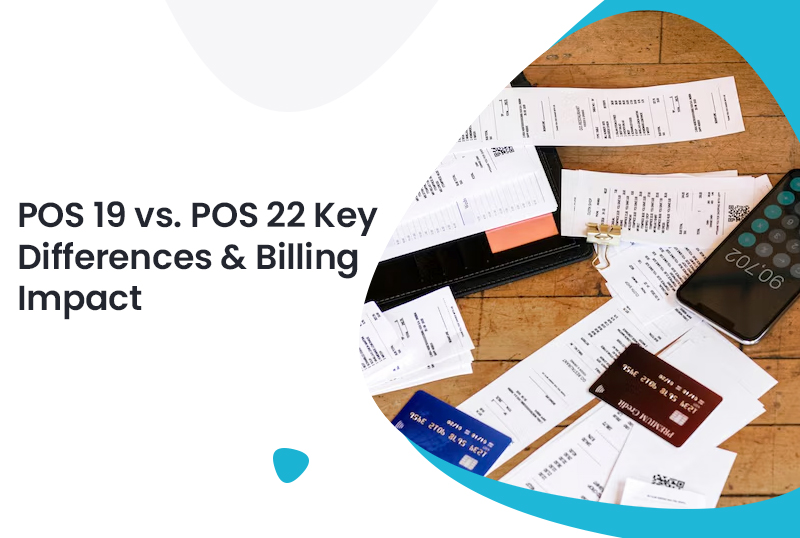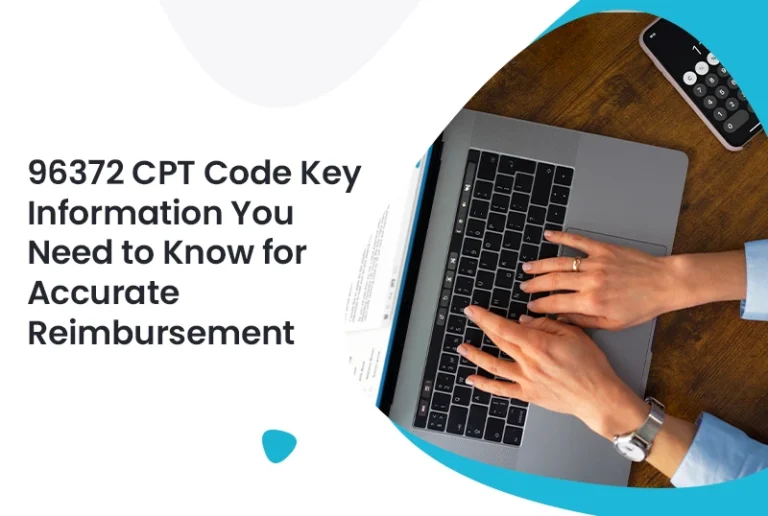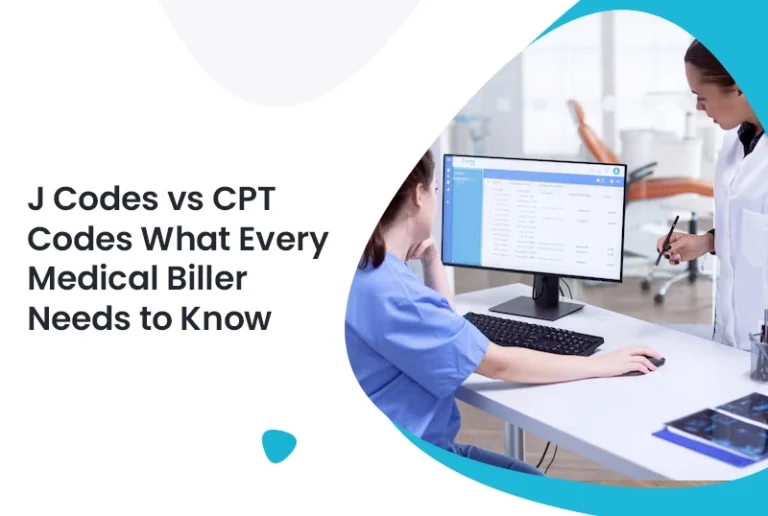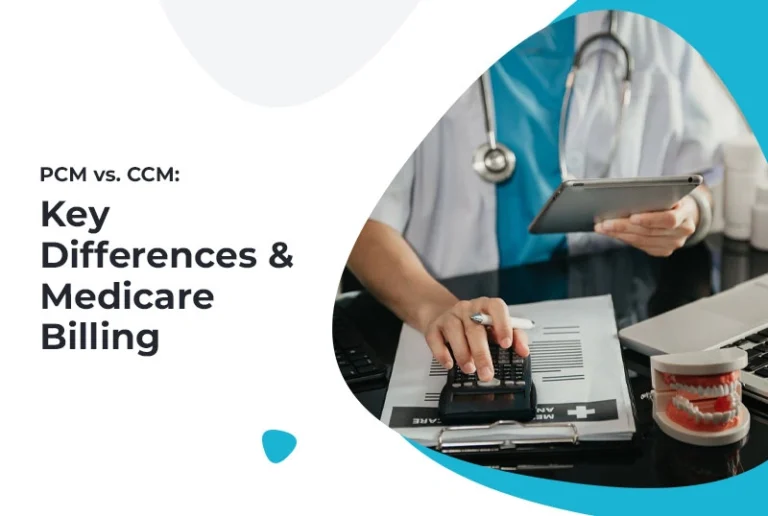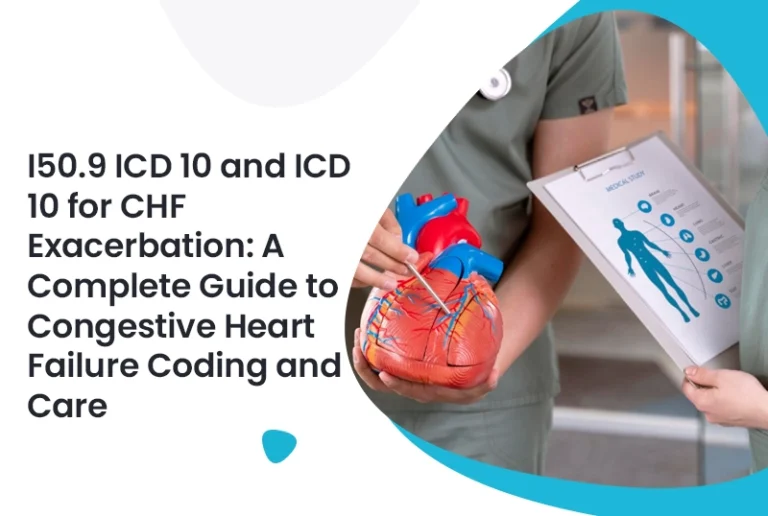Ever had a claim denied for using the wrong place of service? It happens more often than you’d think. Imagine your team carefully following procedure, only to discover that a small coding choice cost your practice thousands. That’s where the difference between POS 19 and POS 22 becomes critical.
Whether you’re part of a medical billing service team or a provider trying to tighten your revenue operations, understanding how POS codes affect payment is non-negotiable. But don’t worry because we’re here to make sense of the confusion.
Let’s unpack what makes POS 19 and POS 22 similar, how they differ, and why picking the right one can mean the difference between a paid claim and a payment delay.
What Is POS 19? A Quick Breakdown
POS 19 refers to a hospital-based outpatient department located off-campus. This is a facility setting, not a physician’s office, and billing under this code means:
- Services are provided in a hospital-owned clinic
- The clinic is located more than 250 yards away from the hospital’s main campus
- Resources like nursing, supplies, and space are managed by the facility
POS 19 became effective January 1, 2016, as part of CMS’s goal to differentiate between off-campus and on-campus facilities for reimbursement purposes. This differentiation affects the payment rate and modifiers used.
When to use POS 19:
- Facility is hospital-owned and off-campus
- You are billing professional services only (the facility bills separately)
- The service is outpatient in nature
Avoid POS 19 when:
- The clinic is on the hospital campus (use POS 22 instead)
- The location is a privately owned physician office
- The provider is furnishing care in an inpatient setting
Now, What About POS 22?
POS 22 indicates that services were rendered in a hospital outpatient department located on the hospital campus. Think of it as the sister code to POS 19 but used when you’re within the campus footprint.
You should use POS 22 if:
- The location is within 250 yards of the hospital’s main campus
- The provider is employed or contracted by the hospital
- You’re billing professional claims only (CMS pays facility separately)
Unlike POS 19, POS 22 supports facility-based reimbursement models for on-campus sites. But here’s the kicker: using the wrong POS can drastically affect how Medicare and other payers process your claim.
Key Differences Between POS 19 and POS 22
To make it easy, here’s a side-by-side comparison:
| Feature | POS 19 (Off-Campus) | POS 22 (On-Campus) |
| Location | Off hospital campus | On hospital campus |
| Medicare Reimbursement | Often lower | Often higher |
| Facility Type | Hospital outpatient clinic | Hospital outpatient clinic |
| Distance from Main Hospital | More than 250 yards | Within 250 yards |
| CMS OPPS Payment Rates | Site-neutral payment applies | Higher campus rates apply |
Choosing between the two isn’t a matter of guesswork. You need to verify the clinic’s designation, ownership, and proximity to the main facility. Getting this wrong could lead to:
- Lower-than-expected payments
- Audit risks
- Modifier conflicts
- Claim denials
Why This Matters to Your Bottom Line
Let’s say you billed a service at POS 22, but the facility was actually off-campus. Your claim might be paid incorrectly or sometimes even flagged for an audit. Multiply that across dozens of visits, and suddenly you’ve got a billing problem that impacts your entire revenue cycle management healthcare workflow.
Here’s how getting POS coding right can improve your bottom line:
- Faster claims processing: Correct POS codes lead to fewer rejections
- Clean audits: No red flags or unnecessary investigations
- Improved cash flow: Fewer delays, smoother AR
Mistakes may seem small at the claim level, but the ripple effect across dozens of services can lead to thousands in lost revenue. That’s why your billing staff must not only be trained in code usage but also understand why it matters.
Real-World Example: One Code, Two Outcomes
Imagine this: Two providers render the same procedure, for example: a minor outpatient surgery.
- Provider A works in a hospital-owned clinic 300 yards away from the hospital and bills POS 22.
- Provider B works at a similar clinic but bills POS 19
Provider A’s claim is flagged due to a location mismatch, leading to payment denial and reprocessing delays. Provider B, on the other hand, gets paid without issue.
One small difference, just a few yards, created a massive billing problem.
Tips for Choosing the Right POS Code
To avoid costly mistakes, follow these tips:
- Confirm whether the clinic is on-campus or off-campus
- Check the facility’s CMS designation
- Train your billing team regularly on POS updates
- Review payer-specific rules, especially for Medicare Advantage plans
- Keep documentation to justify POS use during audits
How to Stay POS-Compliant Without Losing Sleep
Staying on top of the POS codes requires a bit of strategy. Don’t just rely on assumptions, get your compliance and coding teams on the same page. Regular staff training and updated EMR templates can reduce errors significantly.
Consider scheduling quarterly audits or software validations to ensure that location-specific billing rules are being followed. In addition, some practices partner with a medical credentialing services provider to streamline compliance across multiple providers and locations.
Conclusion
Choosing between POS 19 and POS 22 isn’t just a clerical task. It’s a strategic decision that can impact your revenue, compliance, and operational efficiency. From payer reimbursements to audit readiness, getting this right is a must.
Whether you’re a large facility or a small outpatient clinic, understanding and using POS codes accurately ensures that you get paid what you deserve, on time, every time.
FAQs
Q1: Can I use POS 19 for telehealth?
No. Telehealth has designated POS codes (e.g., POS 02 or POS 10), not POS 19.
Q2: Are the reimbursement rates different for POS 19 and POS 22?
Yes. POS 19 often results in lower, site-neutral payment rates compared to POS 22’s on-campus rates.
Q3: What’s the best way to avoid mistakes in POS billing?
Train your team, use up-to-date EHR templates, and work with experts in medical billing service and credentialing.
Q4: How often should we audit our POS usage?
Ideally, every quarter. Regular audits help catch location mismatches early and avoid costly errors.
Q5: Who sets the guidelines for POS 19 and POS 22?
CMS (Centers for Medicare & Medicaid Services) defines and regulates POS codes, including billing and documentation standards.

